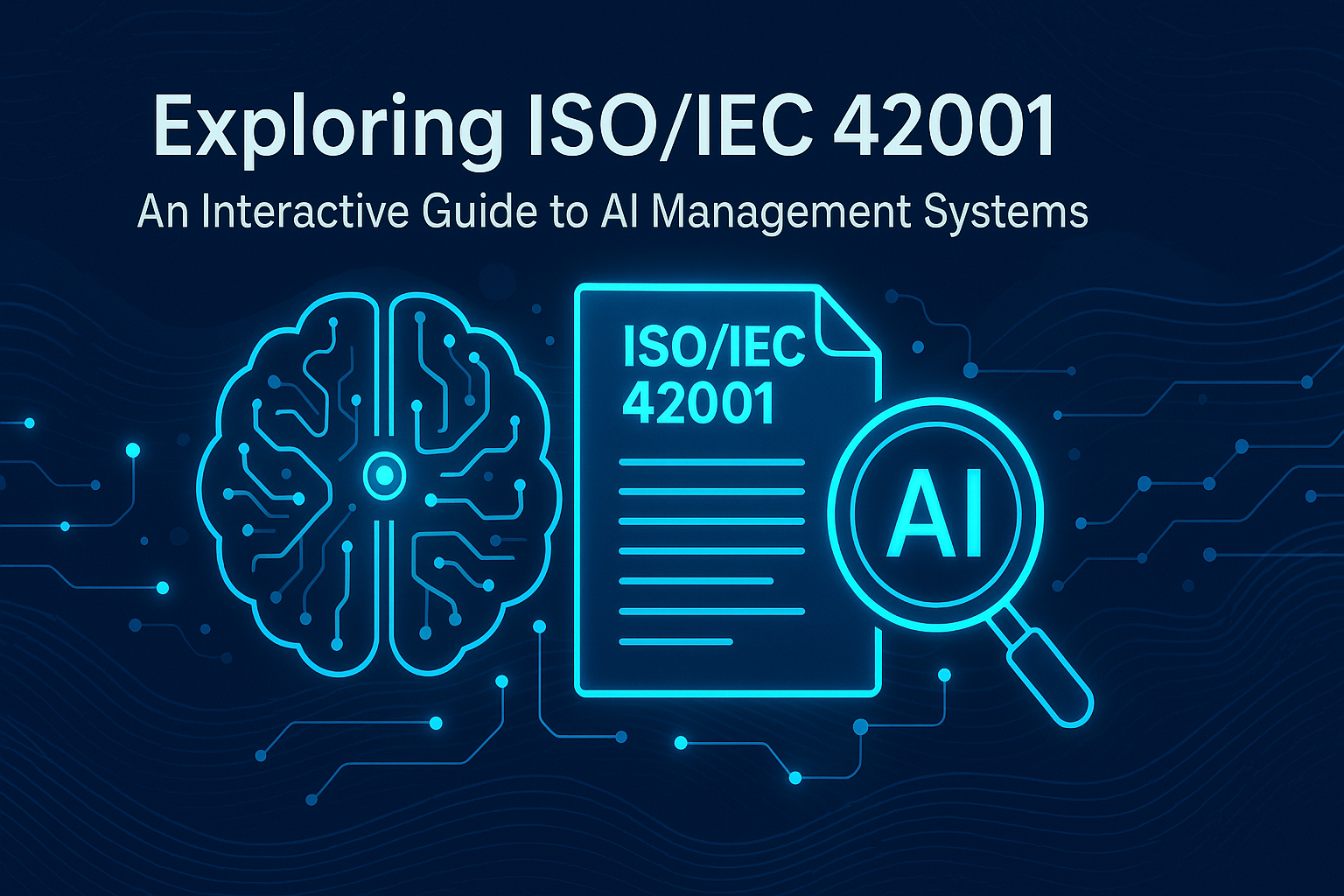Exploring ISO/IEC 42001, An Interactive Guide to AI Management Systems

Exploring ISO/IEC 42001: An Interactive Guide to AI Management Systems
In today's rapidly evolving AI landscape, organizations face increasing pressure to implement responsible AI governance frameworks. The new ISO/IEC 42001 standard—the first international standard for AI Management Systems (AIMS)—provides a comprehensive structure for organizations to develop, implement, and continuously improve their approach to AI. To help visualize this complex standard, we've created an interactive tree diagram that maps out the entire ISO 42001 framework and its controls.
Explore the ISO 42001 AIMS interactive visual guide →
What is ISO/IEC 42001?
Released in December 2023, ISO/IEC 42001 is the first international standard specifically designed for AI Management Systems. It follows the same high-level structure as other ISO management standards (like ISO 27001 for information security), making it easier to integrate with existing management systems. The standard specifies requirements for establishing, implementing, maintaining, and continually improving an AI management system within an organization. It applies to any organization that develops, provides, or uses AI systems, regardless of type, size, or industry.
Understanding the AIMS Control Matrix
Our interactive visualization maps the relationship between the main clauses of ISO 42001 and the specific controls found in Annex A of the standard. This visualization helps organizations:
- Understand the standard's structure - See how the main clauses (4-10) relate to specific controls
- Identify relevant controls - Quickly find controls applicable to specific aspects of AI management
- Plan implementation - Visualize dependencies and relationships between requirements
Key Elements of the Standard
ISO 42001 is organized into the following main sections:
- Context of the Organization (Clause 4) - Understanding internal and external issues, interested parties, and scope
- Leadership (Clause 5) - Management commitment, AI policy, and organizational roles
- Planning (Clause 6) - Risk assessment, impact assessment, and setting objectives
- Support (Clause 7) - Resources, competence, awareness, communication, and documentation
- Operation (Clause 8) - Operational planning and control, risk treatment
- Performance Evaluation (Clause 9) - Monitoring, internal audit, and management review
- Improvement (Clause 10) - Continual improvement and corrective actions
The Annex A controls provide specific measures for addressing AI-related risks and implementing good practices in AI governance.
Getting Started with ISO 42001
For organizations looking to implement ISO 42001, we recommend:
- Conduct a gap analysis - Compare your current AI practices against the standard's requirements
- Identify AI-specific risks - Assess potential impacts of your AI systems on individuals and society
- Define your AI policy - Establish principles and commitments for responsible AI
- Implement controls - Apply suitable controls from Annex A based on your risk assessment
- Continuously improve - Monitor, measure, and improve your AI management system
Conclusion
ISO 42001 represents a significant step forward in providing a structured approach to AI governance. By implementing this standard, organizations can demonstrate their commitment to responsible AI practices while maintaining flexibility for innovation. Explore our interactive tree visualization to better understand how ISO 42001 can help your organization establish a robust AI management system.
Explore the ISO 42001 AIMS interactive visual guide →
All the best!
Ben

Comments (0)
Be the first to comment